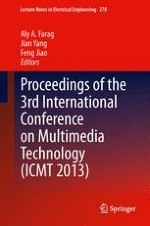2014 | OriginalPaper | Buchkapitel
27. Segmentation Based on Spiking Neural Network Using Color Edge Gradient for Extraction of Corridor Floor
verfasst von : XiaoWei Wang, QingXiang Wu, Zhenming Zhang, Zhiqiang Zhuo, Liuping Huang
Erschienen in: Proceedings of the 3rd International Conference on Multimedia Technology (ICMT 2013)
Verlag: Springer Berlin Heidelberg
Aktivieren Sie unsere intelligente Suche, um passende Fachinhalte oder Patente zu finden.
Wählen Sie Textabschnitte aus um mit Künstlicher Intelligenz passenden Patente zu finden. powered by
Markieren Sie Textabschnitte, um KI-gestützt weitere passende Inhalte zu finden. powered by
